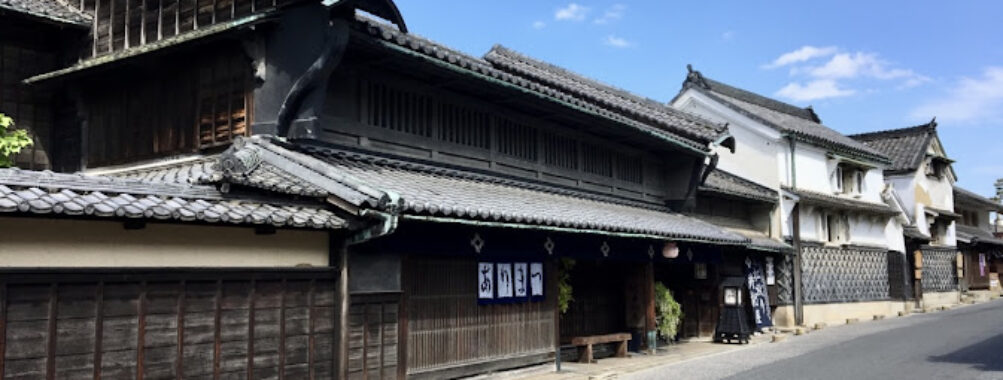
Arimatsu Narumi Shibori Tie-Dyeing Museum
Table of Contents
Description
Step into a world where fabric becomes art at the Arimatsu Narumi Shibori Tie-Dyeing Museum. This intimate space preserves centuries of Japanese textile innovation, specifically the intricate art of shibori – a sophisticated tie-dyeing technique that transforms ordinary fabric into extraordinary masterpieces. [The museum showcases this traditional craft through engaging demonstrations and carefully curated displays](https://shibori-kaikan.com/en/information).
The moment you walk in, you’ll be transported to the Edo period when this art form first flourished in the Arimatsu-Narumi region. What makes this place special isn’t just the displays – it’s the living, breathing nature of the exhibits. Master artisans regularly demonstrate their skills, letting you witness firsthand how simple threads and fabric transform into complex patterns through precise manipulation and dyeing techniques.
Key Features
• Live demonstrations by skilled artisans showing traditional shibori techniques
• Historical exhibits showcasing the evolution of tie-dyeing in Japanese culture
• Hands-on workshops where visitors can try basic shibori techniques
• [Extensive collection of traditional and contemporary shibori pieces](https://www.aichi-now.jp/en/spots/detail/18/)
• Gallery featuring rotating exhibitions of modern shibori artists
• Gift shop offering authentic shibori products and materials
• Wheelchair-accessible facilities throughout the museum
• Clean, modern restroom facilities
• Multilingual information panels and guides
• Photography-friendly exhibition areas
Best Time to Visit
Early mornings tend to be quieter, perfect for those wanting to observe the artisans at work without crowds. The museum really comes alive during the spring and fall months when the weather is mild and perfect for exploring the surrounding historic district. If you’re lucky enough to visit during June, you might catch the annual Arimatsu Shibori Festival, when the whole area transforms into a celebration of this ancient art form.
Weekday afternoons are typically less crowded than weekends, giving you more opportunity to interact with the artisans and ask questions. I’d suggest avoiding Japanese holiday periods unless you don’t mind sharing the space with enthusiastic local tourists.
How to Get There
The museum sits in the historic [Arimatsu district](https://www.snowmonkeyresorts.com/activities/arimatsu/), which itself is worth exploring. From Nagoya Station, you can take the Meitetsu Line to Arimatsu Station. The museum is about a 7-minute walk from there, and you’ll enjoy strolling through the preserved Edo-period streetscape along the way.
If you’re driving, the museum provides wheelchair-accessible parking, though spaces are limited. Just remember that the surrounding streets are narrow and authentically preserved from the Edo period, so navigation might be tricky in larger vehicles.
Tips for Visiting
First off, give yourself at least 2-3 hours to properly experience the museum. Trust me, you’ll want the extra time to watch the demonstrations and maybe try your hand at some basic techniques. Bring a camera – the patterns and processes are absolutely photo-worthy, and photography is allowed in most areas.
Consider joining a workshop if you’re interested in creating your own shibori piece. But here’s an insider tip: book these in advance as they fill up quickly, especially during peak tourist seasons. The staff are incredibly knowledgeable and patient with beginners, so don’t be shy about asking questions.
The gift shop is a treasure trove of authentic shibori pieces. While prices might seem high at first, remember you’re paying for handcrafted artistry that takes years to master. If you’re on a budget, they also offer smaller items like handkerchiefs and scarves that make perfect souvenirs.
Wear comfortable shoes as you’ll be standing a lot, and bring a light jacket – the demonstration areas are kept cool to preserve the textiles. Oh, and don’t rush through the historical exhibits at the beginning – understanding the context really enhances your appreciation of the demonstrations that follow.
For the best experience, try to time your visit with one of the demonstration sessions. The artisans’ skilled hands moving with practiced precision, creating intricate patterns – it’s absolutely mesmerizing. And while most staff speak some English, having a translation app handy can help you catch the finer details of the explanations.
Remember to explore the surrounding historic district either before or after your museum visit. The preserved Edo-period architecture and traditional shops complement the museum experience perfectly, giving you a fuller understanding of how this art form has been maintained through generations in this unique corner of Japan.
Location
Places to Stay Near Arimatsu Narumi Shibori Tie-Dyeing Museum
Find and Book a Tour
Explore More Travel Guides
No reviews found! Be the first to review!